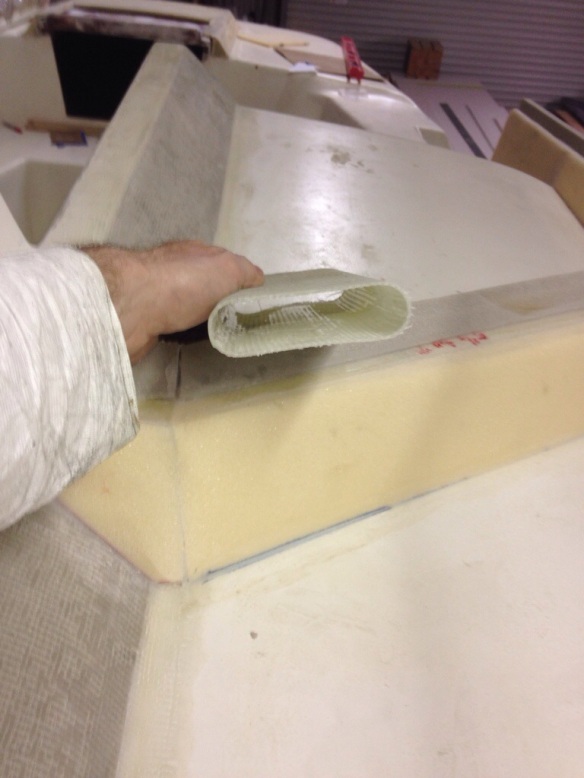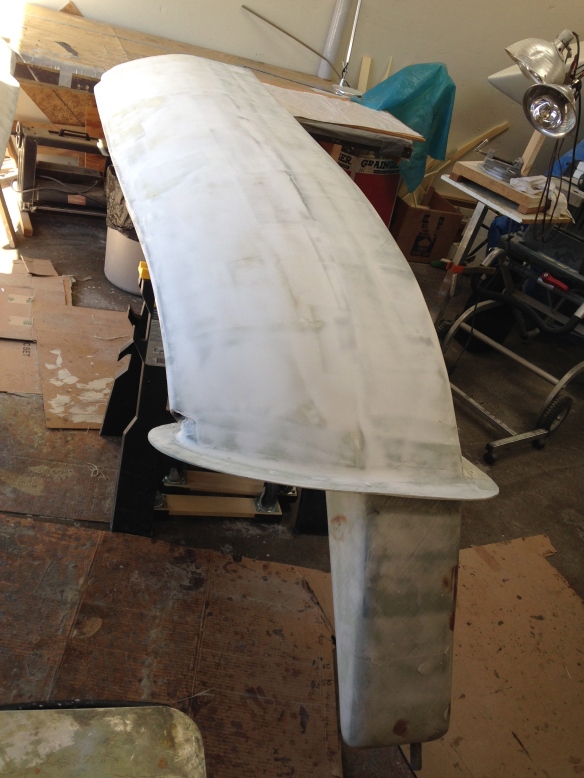… But in a good way. The underwater portion of the hull is almost done with fairing. Each square foot done with the big sander this week is a completed step, and there’s just the last 8′ or so at the stern to finish up tonight. Very much looking forward to painting, instead of sanding, the bottom of the boat.
Just above the waterline we’re finishing up those beam brace tang fairings. The stack-and-glue foam was rough shaped with a wide blade on the multi tool.

Then the flapper disk on the grinder, and finally a sander to smooth out the shape.

The white ring on the sander is glue gun residue. That gummed up the sander quickly – could have done more spot-glueing instead of continuous beads to lessen the glue sanded.

Here’s the outer fiberglass lamination. This process worked well: spread epoxy on the boat and let that get tacky while the fabrics are prepping. Lay out a transport plastic (an old bag here). Wet out the two layers of glass cloth and cover the outside face with peel ply. Carry the whole package to the hull and hold it in place, then reach behind and start pulling away the transport plastic. This way there’s actually no touching of the wet fabric, and no distortion.

We did the first one with a vacuum bag but found it wasn’t necessary – the other three worked just fine with plain hand layup.
Here we are with a first layer of fairing putty.

And here after a sanding pass and second coat added. These will get sanded again, and fairing touch ups tomorrow night if needed. With that, all the main hull fabrications will finally be DONE! Through the holidays we’ll do any more needed little fairing touch ups, and get the first of the primer started.


















 </a
</a


































